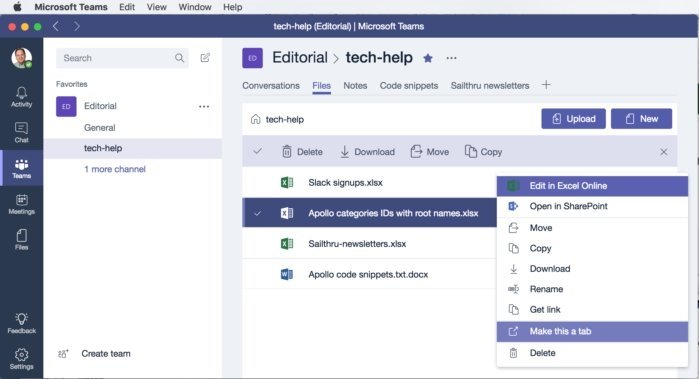Oct 17, 2018 You might think that Outlook will display all of your mail (after all, why wouldn’t it) but by default, the Outlook client only keeps the last year of email on your computer. All of your mail still exists on the Microsoft Exchange server but it’s not visible on Outlook. Here’s why Microsoft sets this default and how to change it if you want. With a Microsoft Exchange account, all Outlook items are stored on the Exchange server and synchronized with Outlook at regular intervals.This allows you to access the items from another computer and to retrieve server-based copies of your items if your hard disk is damaged. When you use Cached Exchange Mode, all of your Exchange folders are available automatically. On the Tools menu, click Account Settings. The Account Settings command is missing. The Account Settings command is on the Tools menu in Microsoft Office Outlook 2007. If you are using an earlier version of Outlook, the following instructions do not apply. Note: If your profile does not contain a Microsoft Exchange account, your messages are stored on your computer in a Personal Folders file (.pst).However, if your profile contains both an Exchange account and a POP3 email account, and the default setting is to deliver all new messages to your mailbox on the server running Exchange, your downloaded POP3 messages are stored in your Exchange account. Connect and stay organized with your email, calendar, and contacts all in one place with the latest version of Outlook for your home or business.
-->Get the essential productivity tools that just keep getting better with Office 365. Exchange Online is a hosted solution that you can get by itself or with an Office 365 subscription. Exchange Server 2019 is an on-premises solution.
One of the questions we often hear is 'How does Exchange Online back up my data?' You may be asking this because you're concerned about how to recover your data if there is a failure. Alternatively, you may be wondering how to recover your data if it gets accidentally deleted. This topic answers these questions.
How does Exchange Online protect mailbox data?
Lots of things can disrupt service availability, such as hardware failure, natural disasters, or human error. To ensure that your data is always available and that services continue, even when unexpected events occur, Exchange Online uses the same technologies found in Exchange Server. For example, Exchange Online uses the Exchange Server feature known as Database Availability Groups (DAGs) to replicate Exchange Online mailboxes to multiple databases in separate Microsoft datacenters.
As a result, you can readily access up-to-date mailbox data in the event of a failure that affects one of the database copies. In addition to having multiple copies of each mailbox database, the different datacenters enforce the data using replication (data resiliency). If one fails, the affected data are transferred to another data center with limited service interruption, and users experience seamless connectivity.
Note
You can get the latest information related to a service interrupting event by logging into the Service Health Dashboard. For more information, see View the status of your services.
What happens if users accidentally delete data from their mailboxes?
Deleted items are stored in the Deleted Items folder of the mailbox. Items removed from the Deleted Items folder or deleted by pressing Shift+Delete are most likely recoverable if they're dealt with promptly.
For more information about how admins can recover deleted items in Exchange Online, see the following topics:
Recoverable Items folder in Exchange Online.
Change how long permanently deleted items are kept for an Exchange Online mailbox.
Note
Point in time restoration of mailbox items is out of scope for the Exchange Online service, though there might be third-party solutions available that provide this functionality. Exchange Online offers great retention and recovery support for your organization's email infrastructure, and your mailbox data is available when you need it, no matter what happens. For more information about additional options, see the following topics:
How do users backup Outlook data?

Microsoft Exchange Download All Messages Mac Os
Exchange Online does not provide a way to perform a traditional backup of mailboxes. That is, there is no way to restore a mailbox to the state the mailbox was in when the backup was taken.
However, if you need to provide additional storage for user emails, the best way is to use Exchange Online Archiving. Using Outlook to backup data into PST files isn't recommended due to the loss of discoverability and control of the content.
For more information about Exchange Online Archiving, see:
For more information about the licensing requirements for Exchange Online Archiving, see the Exchange Online Archiving Service Description.
How your data is protected
To learn how the service is protected using Data Resiliency, see Office 365 Exchange Data Resiliency.
When Can I Restore Outlook data on an Office 365 account without a license?
After the expiration or removal of an O365 License, Office 365 doesn't instantly remove your data. The default Office 365 retention time is 30 days; this means that you can renew or backup your data into PST before the data is entirely removed from O365.
Microsoft Exchange Email Download
How do users restore Outlook data?
To learn how to restore deleted items in Outlook, see Recover deleted items in Outlook.
Microsoft Exchange Download All Messages Machine
To learn how to restore deleted items in Outlook on the web (formerly known as Outlook Web App), see Recover deleted items or email in Outlook on the web.

Microsoft Exchange 2013 Download

Offboard a user from Office 365
Microsoft Exchange Download All Messages Mac And Cheese
For more info what to do when a user in your organization leaves, check out Remove a former employee from Office 365. This topic discusses the steps you should take and how to secure your data after an employee leaves your organization.